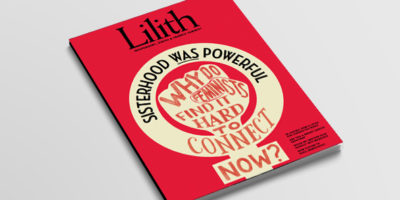
Material Culture: The Samovar
She’s never had a cup of zavarka-infused tea from it, because this samovar — a treasured heirloom from Odessa — now serves only the best, long-evening inflected, artisanal stories.
My samovar, which now sits in the center of my living room, always rested on a little table in the corner of my parents’ dining room. It’s a no-nonsense peasant affair, barrel-shaped and made of brass. It stands 18 inches high and has a round drip bowl underneath its spout.
The samovar was central to Russian households. A source of cultural pride, it was invariably put in a place of honor. The Russian expression “to have a sit by the samovar” meant to have tea in the company of a talk. Often a long talk. Sometimes a talk that was understood, from the get-go, to be one that would settle differences and be conciliative.
I love tea, but I’ve never had a cup from my samovar…and neither has anyone else in my family for at least a hundred years. Instead, my samovar serves stories, the first being the tale about my paternal grandmother’s disapproval of my father’s fiancée. His roots were Hungarian, but my mother’s were — so disappointingly — Russian.
“What is Gertrude’s background?” my grandmother asked my father as she assessed his bride-to-be.
“She’s Russian,” my father said.
My grandmother harrumphed. “She’ll sit around all day by the samovar, just drinking tea now, won’t she?”
My grandmother’s disapproval did not nix the marriage, however, though she and my mother never got along. Until her dying day, my Hungarian-born grandmother looked down on my American-born mother because of her alleged “samovar habits.”
My mother and I talked with each other all the time, but somehow I never asked about the samovar’s provenance, though I did ask why we never used it.
My mother sighed.
“Because it doesn’t have a teapot,” she explained.
Apparently when our family moved from Washington Heights, in New York City, to Mount Vernon, New York, where my parents lived for most of their adult lives, the teapot went missing. They unpacked all the boxes and looked high and low, looked everywhere, but the brass teapot that sat atop the samovar had disappeared.
The teapot would have held a brew of black concentrated tea leaves called zavarka. The protocol for a true Russian cup of tea was to fill the samovar with water and then heat it up by burning charcoal in the samovar’s funnel-shaped core. One lit the charcoal from the bottom grilled opening above the spout. Meanwhile, the teapot, filled with zavarka, heated up, too. One poured as much zavarka as one wanted into one’s cup, then added hot water to taste.
After the teapot disappeared from my parents’ life, my mother relegated the samovar to the living room corner and just boiled water on the stove top. Still, I loved the samovar as a girl, and my mother knew it. When I got married, she bequeathed it to me. Wherever I’ve lived since, it has sat in a place of honor.
Some years after my marriage, a new friend was visiting, and, like all new visitors to our home, she admired the samovar.
“It’s authentic,” she said. “‘Made in Tula in 1879.’”
“How do you know?” I asked.
“It says so.” She pointed to the faded decoration and Cyrillic script embossed on the front; she was able to read and understand Russian.
When I told my mother about its authenticity, she just nodded her head.
“Of course,” she said.
“But I always thought it was just a copy you bought from some antiques dealer once upon a time.”
“Not at all!” she said. “I got it from one of my mother’s sisters, or half-sisters. I forget. My mother’s father was married a second time. Aunt Yetta was a lunatic.”
“Why did she give it to you?”
My mother made a face.
“She didn’t give it to me, Clare. I had to buy it for a dollar.” She paused. “But she should have given it to me. She had absolutely promised. When I was little, and we all lived on the Lower East Side, we visited Aunt Yetta a lot; she lived nearby. I was her favorite niece because I was the only one who would talk to her in Yiddish. I could speak Russian, Yiddish and English, but every time I spoke Yiddish or Russian in the house, my mother would slap me. ‘We’re in America,’ she would shout. ‘We speak English!’”
My mother had lost her Russian, but she remained fluent in Yiddish.
She went back to her tale.
“Aunt Yetta wouldn’t go to night school like everyone else in the family, and nobody wanted anything to do with her. To us, she was a fanatic, wearing a sheytl, not turning on the lights on shabbos. She’d sit in the dark. My mother made me run over to Aunt Yetta’s on Fridays to light candles with her and make sure she had supper.
“I would talk to her. I was nice. She’d say, ‘Miriam Gitl’ — no one else still called me that — ‘you’re such a good little girl, but I got no gelt to pay you for this. So when you grow up, you’ll get married and I’ll give you this samovar.’ She always said that.
“The samovar stood by the shabbos candles we would light together. I loved how it shone when we benched licht. She would tell me how the samovar belonged to our family in Odessa. ‘I carried it over in a pillowcase,’ she’d say. ‘I was sick all the way, but I held close the samovar.’ All of that in Yiddish.”
“So why didn’t she give it to you when you got married?”
“I hadn’t visited her in years,” my mother said. “And she wouldn’t come to my wedding because it wasn’t Orthodox. After my wedding, though, I visited her and asked right away about the samovar. I mean, it was a promise. She was over 80, ancient and bent. Then again, she was ancient and bent when she was 50.
“I gave her a hug and we talked about the samovar. ‘I’m old now, Giteleh,’ she said. ‘I could live to be a hundred. I have to watch out for my future. Give me a dollar and you can have the samovar.’
“Of course, I gave her a dollar, but it wasn’t right. She had made a promise.”
After I was married, as I already said, the samovar, minus its teapot, came to live in my house. I kept it brightly shined, and it was in pristine condition until my daughter was two. She was a climber, and one day she managed to climb up on the table and knock the samovar off, on top of herself. She howled, split her lip, chipped a tooth, and dented the samovar. The lip healed, the baby tooth eventually fell out, but the samovar stayed dented.
I took it to several restorers, all of whom shook their heads regretfully and said they couldn’t fix it. One man, looking particularly pained, turned the samovar around and around and around.
“You realize this dent destroys the value, to say nothing of the aesthetics, don’t you?”
He kept shaking his head. “How did it happen?”
“My daughter knocked it off the table,” I said, and then, sensing his indifference, added, “She’s little. She really bruised herself.”
He exhaled deeply.
“I don’t have children,” he said.
That reminded me of a story a friend of mine used to tell about a valuable Persian carpet whose corner was chewed up by her puppy. When she took it to the best restorer in town, he was horrified.
“Kill the dog,” he advised.
As for me, I live with the dent. When people visit, they always comment on the samovar’s beauty. Then they ask about the dent. Soon there are tales, more tales than mine—about children’s mischief, beloved, inherited possessions, about accidents and losses.
And so, indeed, my father’s mother was right.
We still enjoy long sits by the samovar.
Clare Goldfarb, retired as University Professor, dean, and chair of the English department at Western Michigan University, now lives in Atlanta. She has published widely in journals and is the co-author of Spiritualism and Nineteenth Century Letters.



